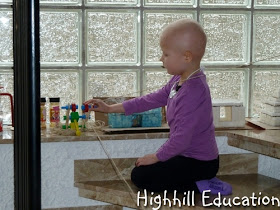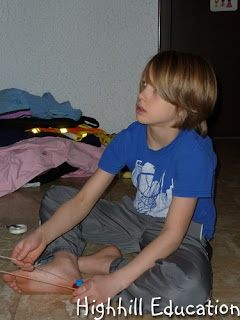This is a five week free simple machine unit study perfect
for
kids in grades 3rd-5th which can be adapted to work for older or
younger children. Each lesson connects an application of simple machines to a period of history. This combined study is designed to spark interest that will lead to further study of history and simple machines based on the interests of the student. Don't be afraid to do research and take the learning in a new direction.
The lever, inclined plane, screw, wedge, wheel and axle and pulley are commonly thought of as the six or seven types of simple machines, when in reality there are only really three different types of simple machines. The wheel and axle, lever and inclined plane. The pulley is an extension of a wheel and axle and the screw and wedge are an extension of an inclined plane.
Here are the three different types of simple machines.
- Lever
- Inclined Plane, Screw, Wedge
- Wheel and Axle, Pulley
Week 1: Stonehenge - Wheel
Week 2: Hanging Gardens of Babylon - Pulley
Week 3: Hanging Gardens of Babylon - Archimedes Screw
Week 4: Snowman - Inclined Plane
Week 5: Assyrians - Wheel and Lever
Week 1: Stonehenge - Wheel
Although the exact purpose of Stonehenge and how it was built remains a mystery, there is much that is known. Read chapter 11 of Our Island Story
Coincidentally, hundreds of carved stone balls which date to the same time period in which Stonehenge was constructed have been discovered in Scotland. Historians have puzzled for years over the function of the balls. Recently, one researcher noticed that nearly all of the balls were constructed to a precise diameter of 2.75 inches and proposed a theory that they functioned as bearings in simple machines.
Based upon this theory, historians constructed a replica system which could have been used to move the large stones at Stonehenge. Make a much simpler version of the simple machine using tennis balls, and pieces of wood.
Since the carved stone balls are similar in size to tennis balls, place several tennis balls between two channels of narrow wooden beams.
Next place a folded up table or sheet of plywood on top of the tennis balls for a platform. Test the system to see if the table plywood can be easily moved.
Add weight to the table and move your materials along the track.
Try testing heavier objects. Can a small person move a large load?
Week 2: Hanging Gardens of Babylon - Pulleys
Set-up a goal for your pulley system such as using the pulleys and materials on the left to lift light-weight balls from the base of the stairs to the blue Ishtar Gate.
Work on solving problems such as how will the portion of the string with the cup attached pass through the pulley?
How will the pulleys stay in place. Tape?
Try different solutions before deciding on a finished system. One solution may be introducing new materials with wheels instead of the provided pulleys.
Spend time working out a solution. Don't be afraid to try different materials and suggestions from all team members.
Week 3: Hanging Gardens of Babylon - Archimedes Screw
This Archimedes screw is located at the Playmobil Fun Park in Germany. Kids can spend hours moving material around in this play pit.
Cut six circles out of stiff paper to fit inside the water bottle.
Cut a slot in the circles and put them onto a skewer.
Tape them together to form a spiral.
Stretch the spiral out and tape to the skewer to be held in place.
Test the screw with cereal. Modify it to get it working. You may have some of these issues.
The cereal gets caught in the tape joints of the disks.
The disks are not spread out far enough.
Many disks are too small so the cereal falls back to the bottom before it can be raised to the top.
Fix the issues so that each screw can successfully lift at least one piece of cereal.
Budget about two and a half hours for reworking the screws to get them to work. This is a challenging project and a true lesson in engineering, science, history, and patience.
Week 4: Snowman - Inclined Plane
Here is one solution. Before the bases of the first two snowmen become snowmen, use those structures as a ramp. Roll the snowball up the ramp into place on the tall snowman. This is an inclined plane simple machine.
Week 5: Assyrians - Wheel and Lever
Chariots contain wheels and axles. During the time of the Assyrians the wheels of the chariot were moved from the rear of the vehicle to the center. This great advancement allowed the Assyrians to place an additional man in their chariots which gave them a significant battle advantage.
Battering rams also contain wheels and the ram mechanism is a lever. A lever helps people do work through the use of a pivot point. In this case the load is hung from two ropes to enable the operator to move it more easily.
Siege towers sometimes contained battering rams and wheels. This one does not. They were used to breech city walls.
There are many different versions of siege towers, battering rams and chariots which were used in the numerous battles between the Assyrians, Hittites and Babylonians. Combine history and science as you explore these weapons of ancient warfare.



































No comments:
Post a Comment
Note: Only a member of this blog may post a comment.